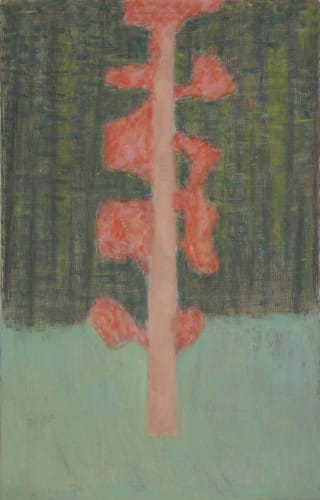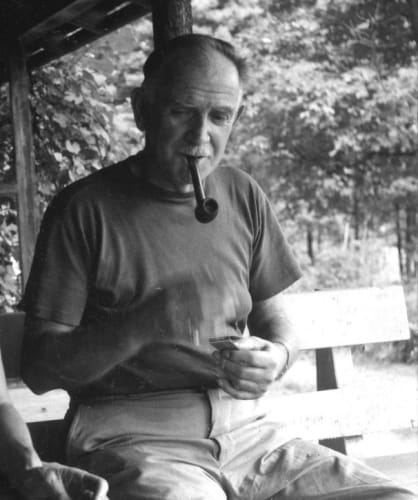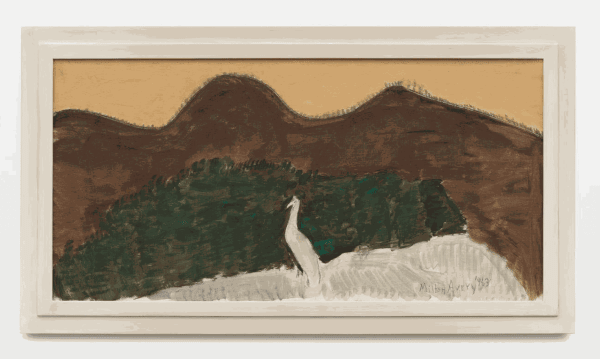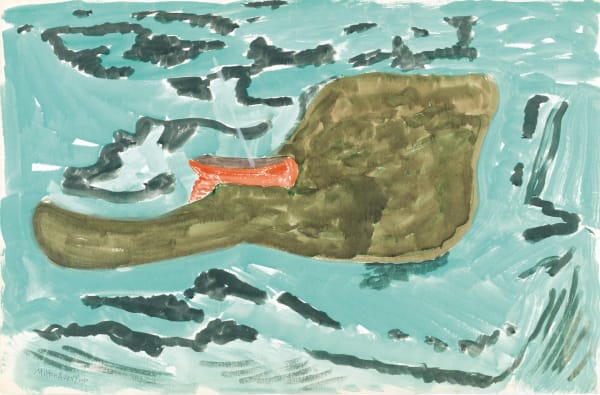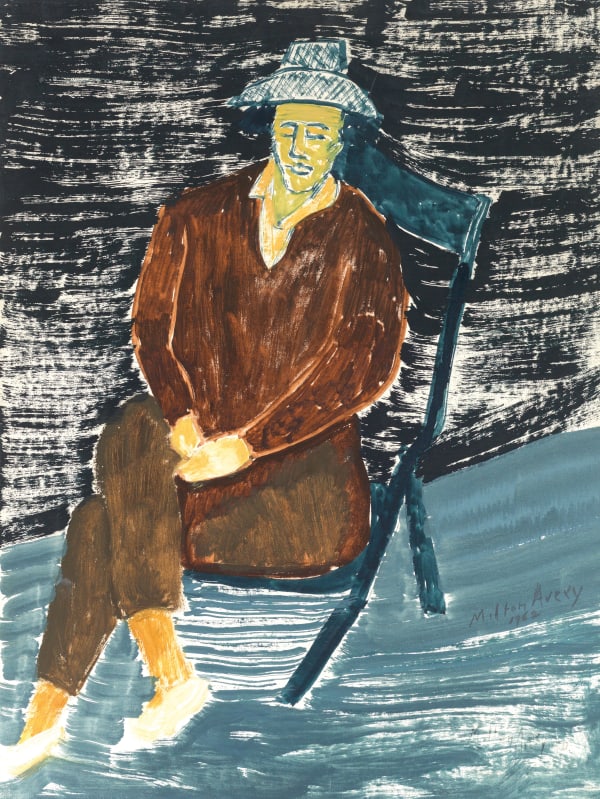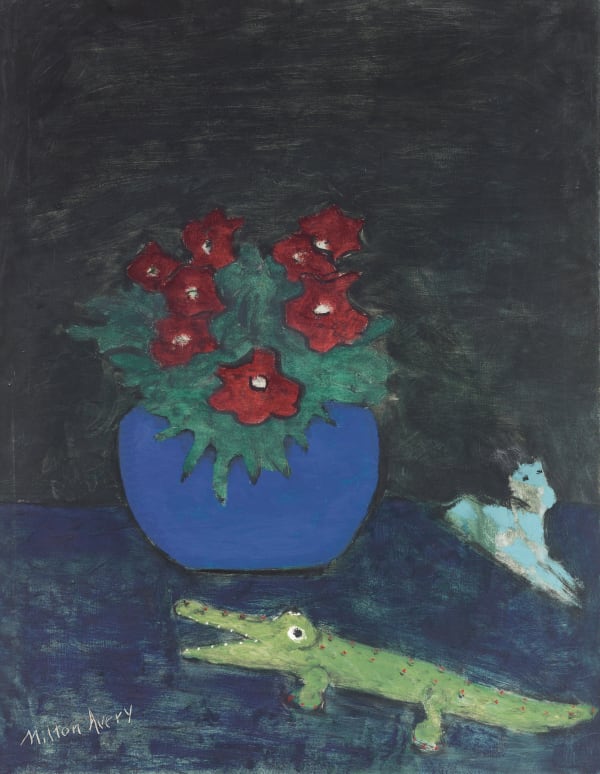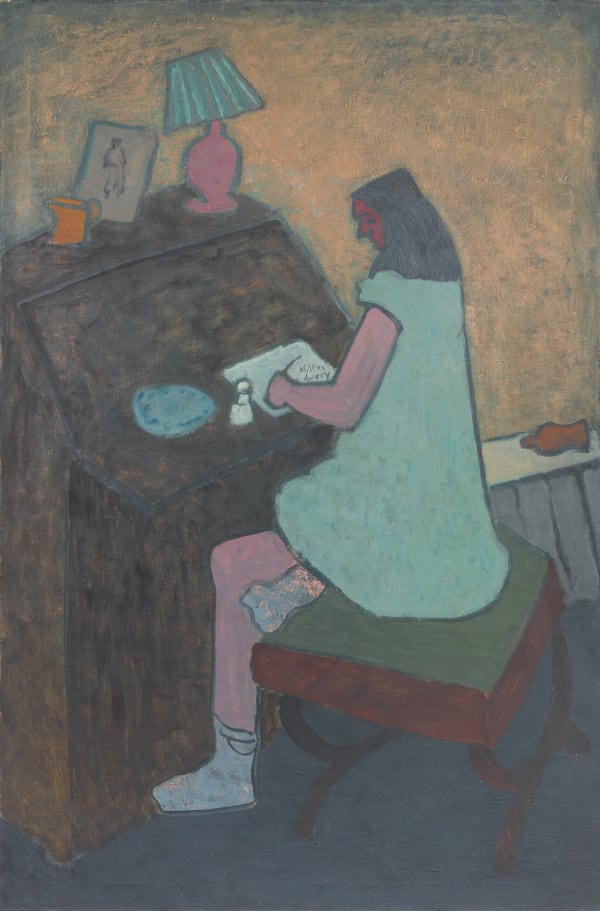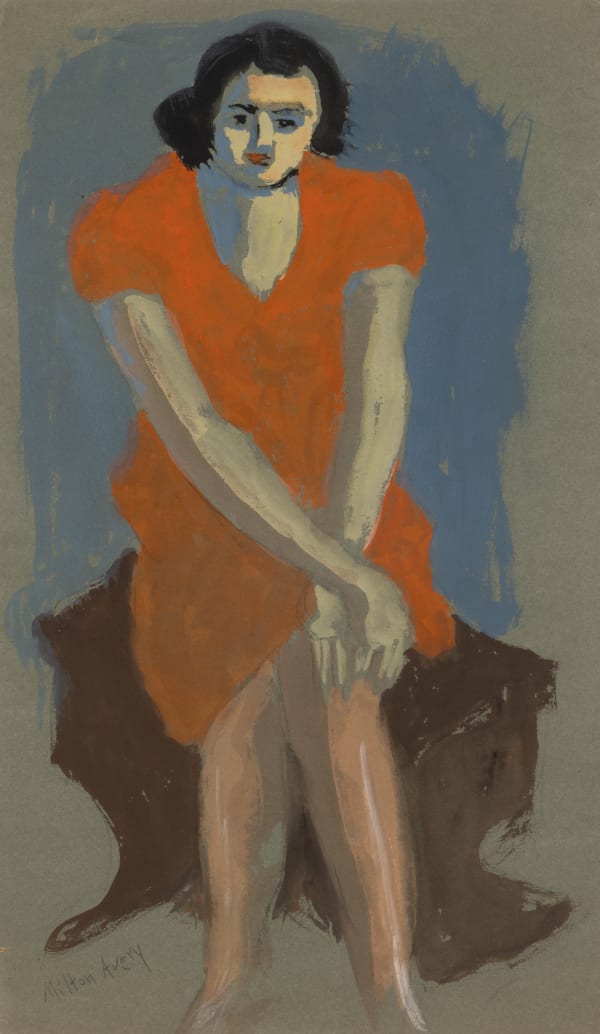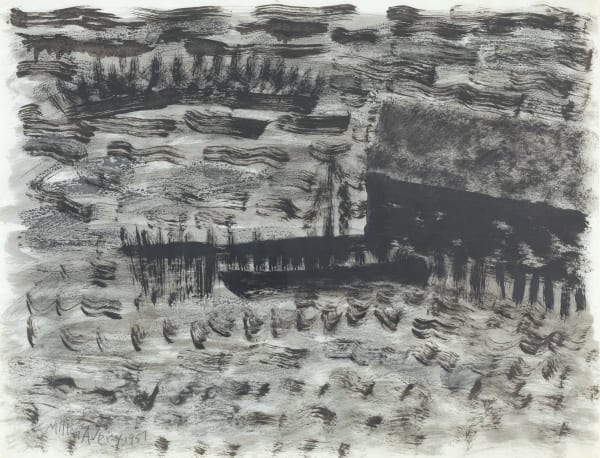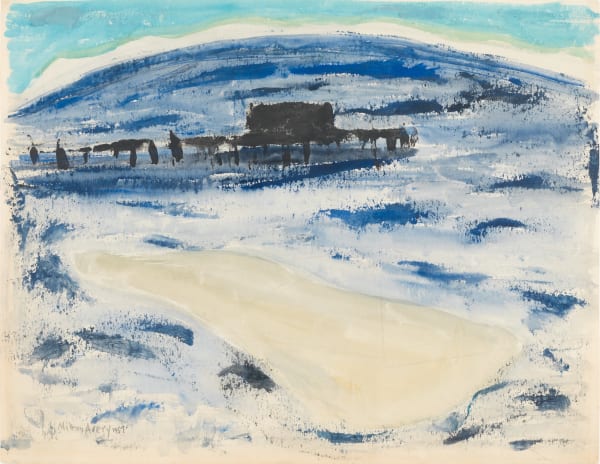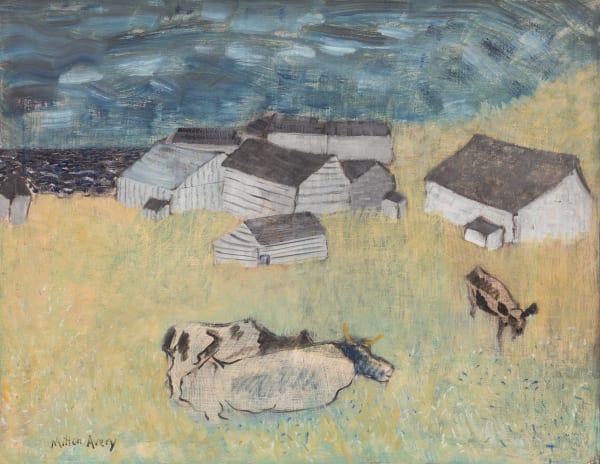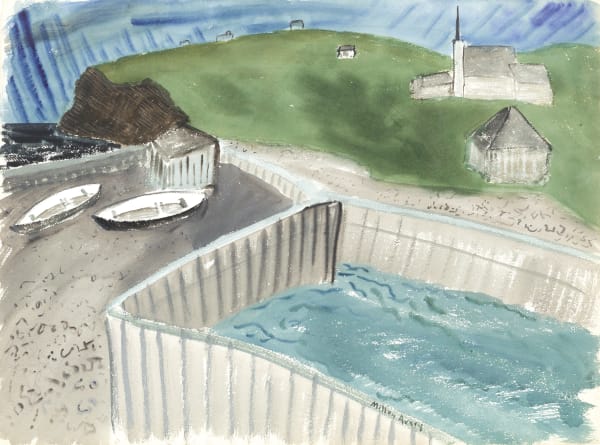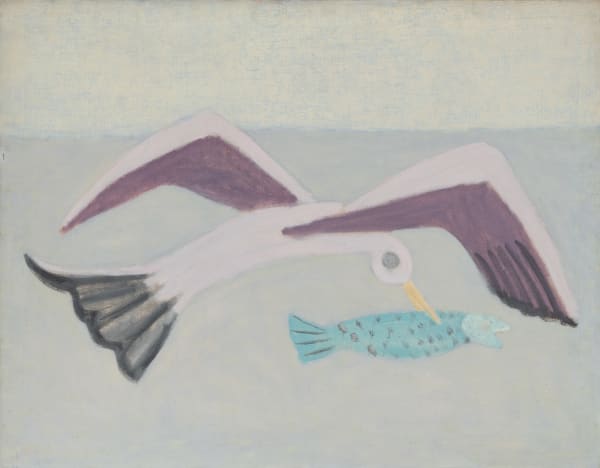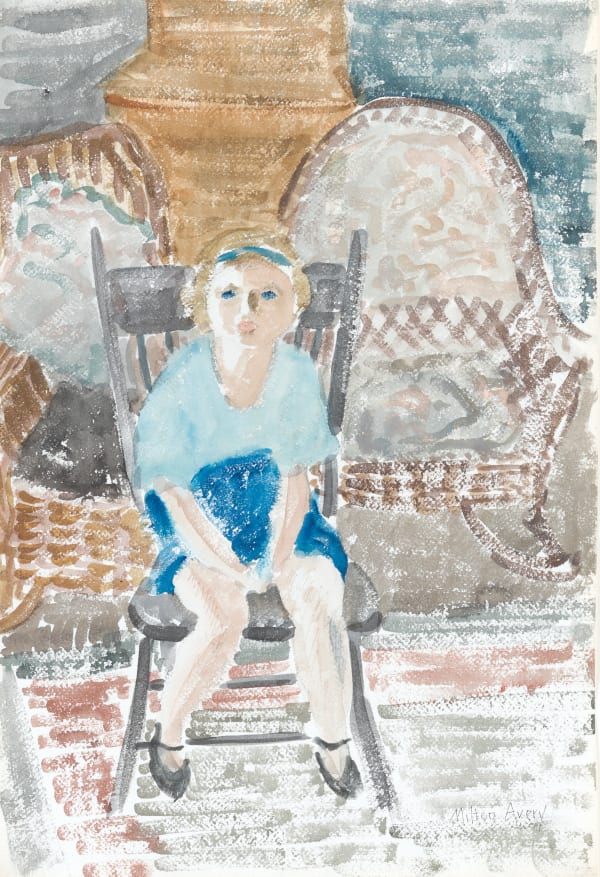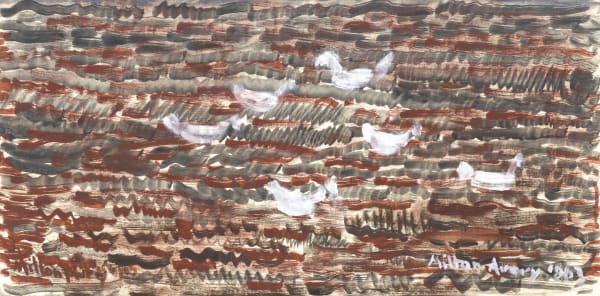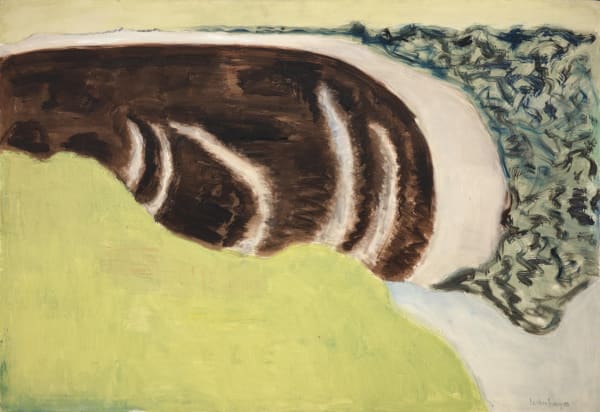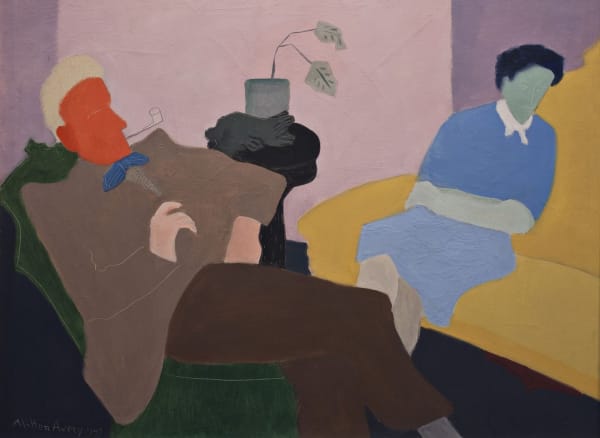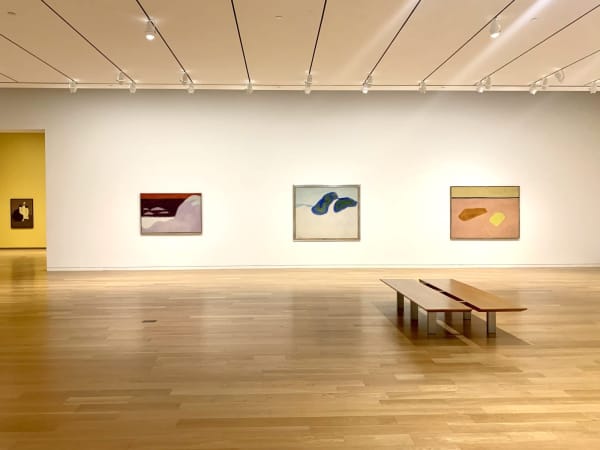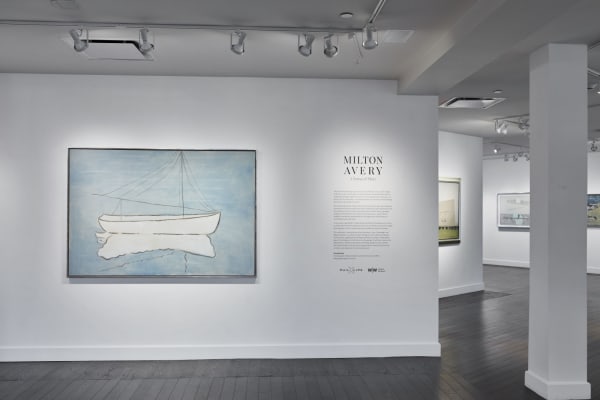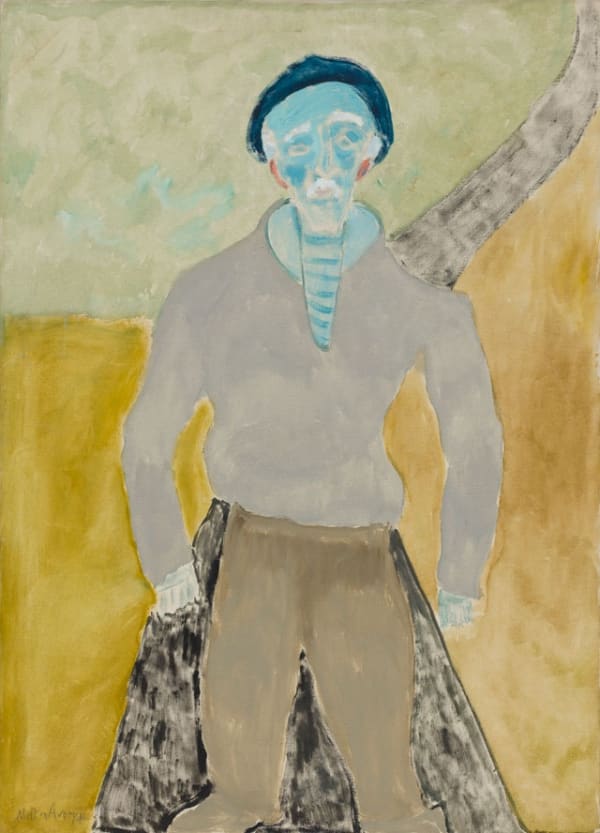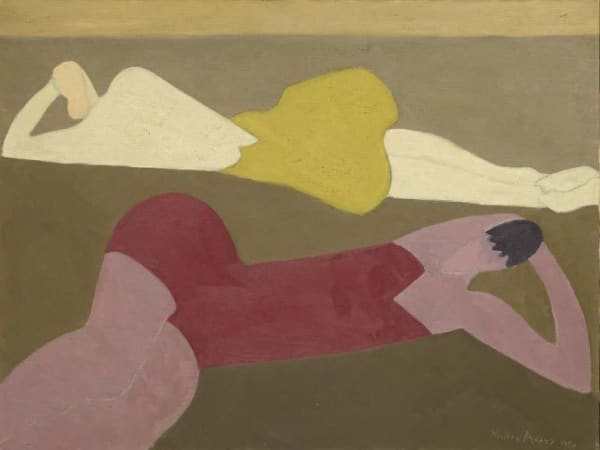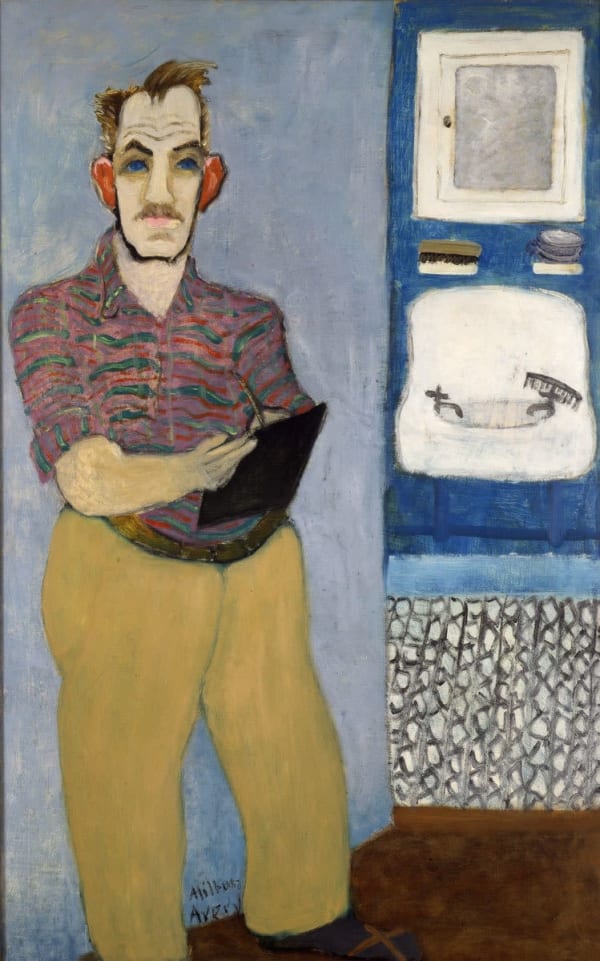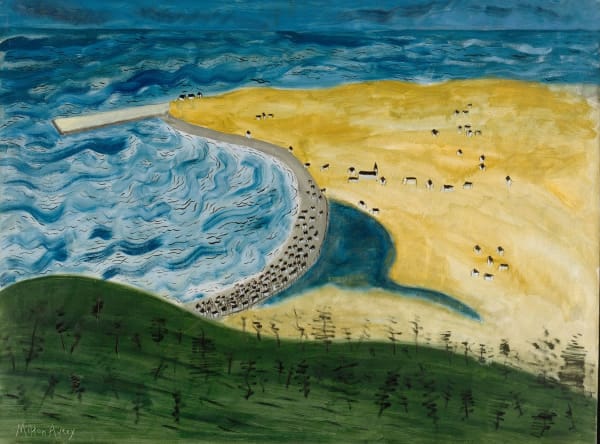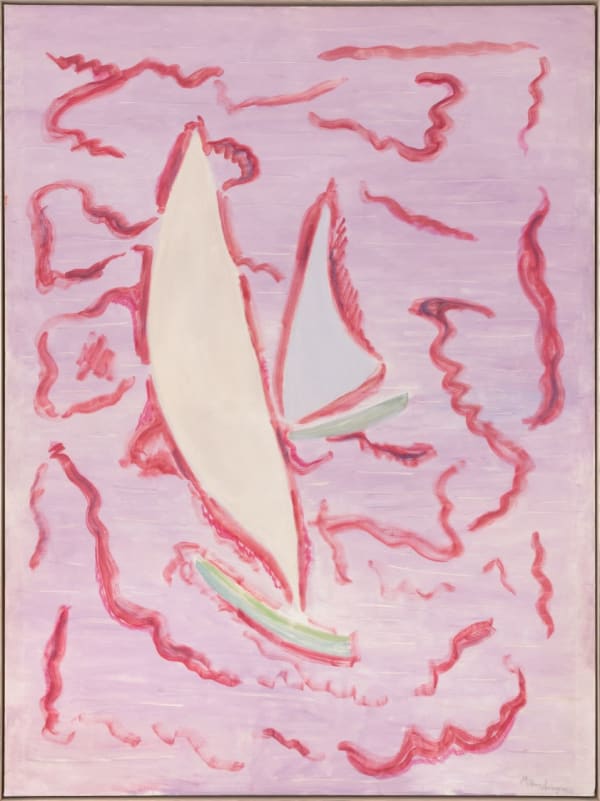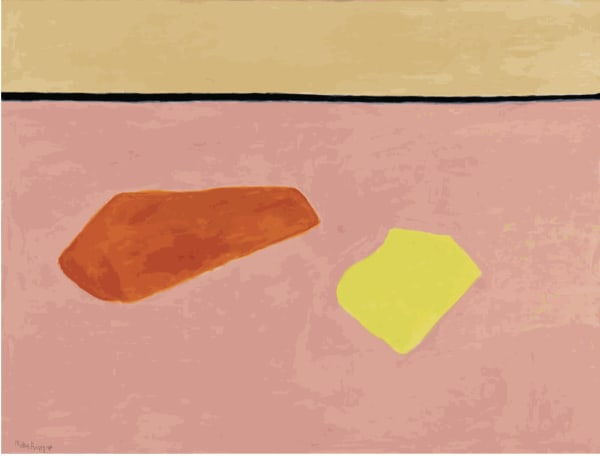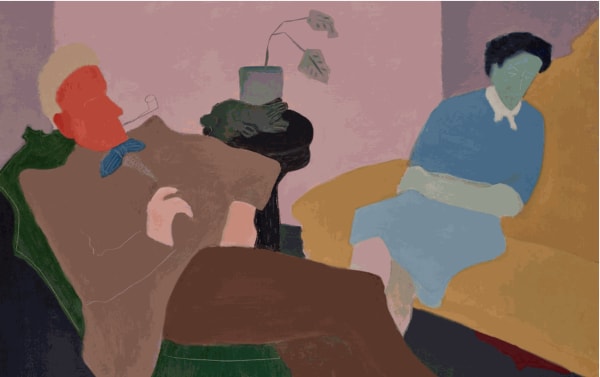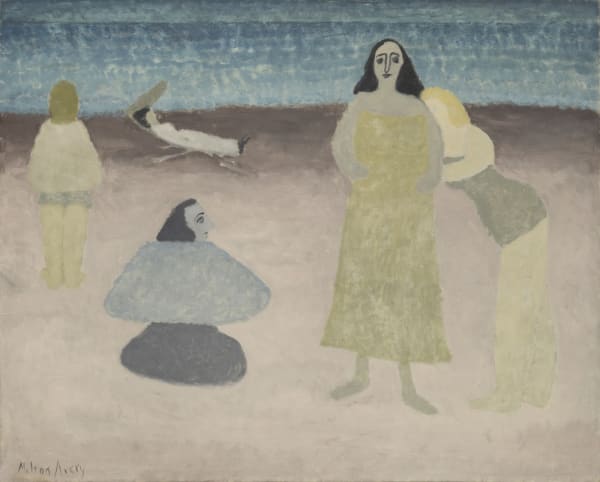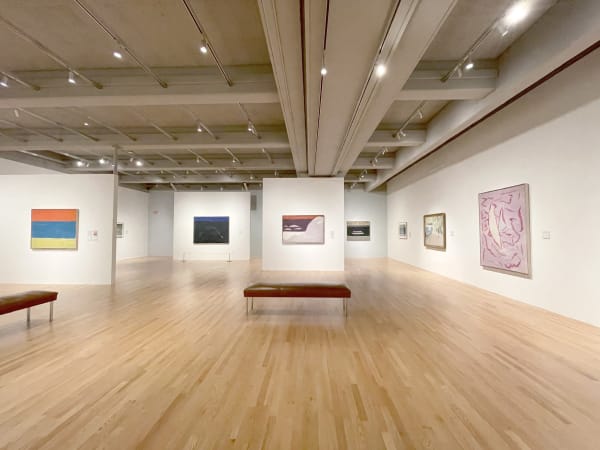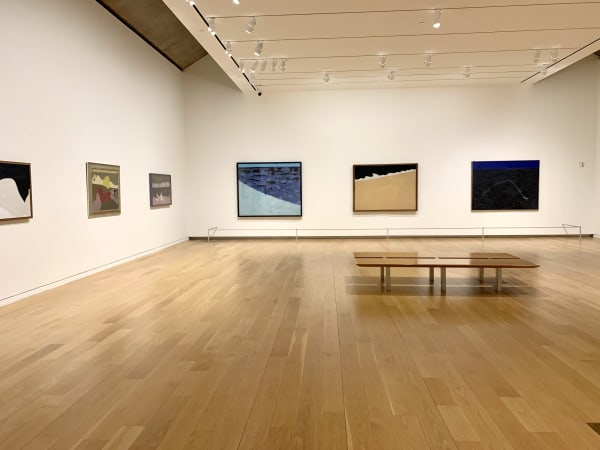Milton Avery 1885-1965
Simple yet complex, monumental yet intimate, Avery's works confront the viewer directly and defy pictorial conventions of scale to establish a physical relationship with the viewer beyond the confines of the canvas
Keenly aware of the grand landscape tradition, as practiced by Thomas Cole and Albert Bierstadt of the Hudson River School, Avery deliberately chose a non-heroic exploration of the canvas. Accessible and intimate, as if they are views from a kitchen window, Avery’s paintings reject outsized ambition yet leaves us with an enduring sense of place.
He managed to enhance the role of nature, not through grandeur, but through evocations of quiet emotion. Using raw canvas and sparse pigment, Avery often applied color more as stain than painted surface, a technique that can be seen as an influence on color field painting. Avery created a world of outlined and interlocking forms to represent the flattened landscape.
Throughout his artistic career, color remained the dominant force, especially as he became less concerned with subject details. This brought greater focus to the shapes and colors within them. Avery’s art is liminal - not fully abstract and yet not distinctly figurative. As a consequence, over time, his work has been hard to classify into a single category.
Waqas Wajahat
Born in Altmar, New York, in 1885, Milton Avery moved with his family to Hartford, Connecticut in 1905. After studying at the Connecticut League of Art Students, he worked a succession of night jobs in order to paint during the daytime. Avery moved to New York in 1925 and in 1926 married Sally Michel, whose earnings as an illustrator enabled him to concentrate more fully on painting. His first exhibition in New York was in 1927, though it was not until 1935 that he had his first one-man exhibition, at the Valentine Gallery, New York. In 1944 his first solo museum exhibition opened at the Phillips Memorial Gallery, Washington, DC. In 1952 he visited Europe for the first time, travelling to London, Paris and the French Riviera. A retrospective exhibition opened at the Whitney Museum of American Art, New York, in 1960; a second retrospective was held at the Whitney Museum of American Art in 1982. In 1962 Milton Avery: Painting 1930-1960 by Hilton Kramer, the first monograph on Avery, was published. Milton Avery died on 3 January 1965 in New York, aged 79.
Avery pursued an independent and steadfast course throughout his career. Always drawing imagery from the world around him, in particular the landscapes and people he loved, his art is as intimate and accessible as it is towering in its ambition and achievement. With his focus on simplified forms and use of colour as a primary means of expression, in the 1930s he profoundly influenced and won the devotion of fellow artists including future abstract expressionists Mark Rothko, Adolph Gottlieb and Barnett Newman. Rothko in particular admired the “gripping lyricism” of Avery’s work. However, while seeking to express an idea in its simplest form, Avery never sought pure abstraction for himself. Above all, he is an artist who resists categorisation. “I never have any rules to follow,” he stated in 1952, “I follow myself.”
Avery’s work is represented in museums and private collections worldwide, including: Albright-Knox Art Gallery, Buffalo, NY; Art Institute of Chicago, IL; Hirshhorn Museum and Sculpture Garden, Washington, DC; Los Angeles County Museum of Art, CA; Metropolitan Museum of Art, NY; Museum of Fine Arts, Boston, MA; Museum of Modern Art, NY; National Gallery of Art, Washington, DC; National Gallery of Australia, Canberra; Philadelphia Museum of Art, PA; The Phillips Collection, Washington, DC; San Francisco Museum of Modern Art, CA; Smithsonian American Art Museum, Washington, DC; Tate, London; Thyssen-Bornemisza Museum of Art, Madrid, Spain; Walker Art Center, Minneapolis, MN; Whitney Museum of American Art, NY; Yale University Art Gallery, New Haven, CT.
-
 Bird and Mountain, 1963Oil on canvas board16 x 30 in
Bird and Mountain, 1963Oil on canvas board16 x 30 in
40.6 x 76.2 cm -
 Winding Stream, 1962Oil on canvas40 x 50 inches
Winding Stream, 1962Oil on canvas40 x 50 inches -
 Red Boat in Green Sea, 1960Watercolor & gouache on paper23 x 35 inches
Red Boat in Green Sea, 1960Watercolor & gouache on paper23 x 35 inches -
 Brown Jacket, 1962Oil on board24 x 18 inches
Brown Jacket, 1962Oil on board24 x 18 inches -
 Red Anemones, 1942Oil on canvas36 x 28 inches
Red Anemones, 1942Oil on canvas36 x 28 inches -
 Young Writer, 1942Oil on canvas48 x 32 inches
Young Writer, 1942Oil on canvas48 x 32 inches -
 Quivering Trees, 1954Oil on canvas48 x 32 inches
Quivering Trees, 1954Oil on canvas48 x 32 inches -
 Seated Woman in Orange Dress, c. 1930sGouache on dark green paper19 1/2 x 11 1/2 inches
Seated Woman in Orange Dress, c. 1930sGouache on dark green paper19 1/2 x 11 1/2 inches -
 Fishing Wharf, 1957Watercolor, gouache & oil crayon on paper17 x 22 in
Fishing Wharf, 1957Watercolor, gouache & oil crayon on paper17 x 22 in
43.2 x 55.9 cm -
 Abandoned Pier, 1957Watercolor on paper20 x 26 inches
Abandoned Pier, 1957Watercolor on paper20 x 26 inches -
 Gaspé Village, 1939Oil on canvas28 x 36 inches
Gaspé Village, 1939Oil on canvas28 x 36 inches -
 Untitled (The El), c. late 1920sLithocrayon on paper38.1 x 30.4 cm
Untitled (The El), c. late 1920sLithocrayon on paper38.1 x 30.4 cm -
 Studio View (Chop Suey), c. 1930sWatercolor on paper22 1/8 x 15 1/4 inches
Studio View (Chop Suey), c. 1930sWatercolor on paper22 1/8 x 15 1/4 inches -
 Railyards, c. 1930sWatercolor on paper21 7/8 x 15 1/8 in
Railyards, c. 1930sWatercolor on paper21 7/8 x 15 1/8 in
55.6 x 38.4 cm -
 Safe Harbor, 1938Watercolor on paper22 x 30 inches
Safe Harbor, 1938Watercolor on paper22 x 30 inches -
 Hills and Fields, 1943Watercolor on paper22 x 30 in
Hills and Fields, 1943Watercolor on paper22 x 30 in
55.9 x 76.2 cm -
 Bird and Fish, 1952Oil on canvas28 x 36 inches
Bird and Fish, 1952Oil on canvas28 x 36 inches -
 Fish Plate, c. 1930sWatercolor on paper15 1/4 x 22 5/8 inches
Fish Plate, c. 1930sWatercolor on paper15 1/4 x 22 5/8 inches -
 Tugboats in Harbor, c. 1930sGouache on dark gray paper18 x 23 inches
Tugboats in Harbor, c. 1930sGouache on dark gray paper18 x 23 inches -
 Girl with Wicker Chairs, c. 1930sWatercolor on paper22 x 15 inches
Girl with Wicker Chairs, c. 1930sWatercolor on paper22 x 15 inches -
 Gulls in Rippled Sea, 1963Oil on canvas board15 x 30 inches
Gulls in Rippled Sea, 1963Oil on canvas board15 x 30 inches
-

Colour Form and Composition
Milton Avery and His Enduring Influence on Contemporary Painting 25 Oct 2025 - 4 Apr 2026MICAS presents a landmark exhibition exploring the enduring influence of American painter Milton Avery (1885–1965) on contemporary art. A pivotal figure in 20th-century American painting, Avery bridged American Impressionism and...Read more -

A Certain Form of Hell
Karma Gallery, Thomaston, Maine 20 Jul - 31 Aug 2025As above, so below—every vision of heaven is mirrored by a depiction of hell. Paintings of the Last Judgment throughout the millenia, from Jan van Eyck to Michelangelo to William...Read more -

Milton Avery: Boundary of Silence
He Art Museum, Foshan, China 11 Nov 2024 - 6 Apr 2025From November 11, 2024 to April 6, 2025, He Art Museum (HEM) presents American artist Milton Avery’s exhibition “Boundary of Silence”. The exhibition showcases the artist’s paintings alongside artworks from...Read more -

A Particular Kind of Heaven
Karma, Thomaston, ME 21 Jul - 1 Sep 2024A Particular Kind of Heaven presents a wide array of empyrean imagery by a multigenerational group of artists. Sited in a deconsecrated Catholic church, the exhibition probes connections between the...Read more -

Milton Avery
Royal Academy of Arts, London 15 Jul - 16 Oct 2022Milton Avery is considered one of North America’s greatest 20th-century colourists. According to The New York Times , “Only Matisse – to whose art he owed much, of course –...Read more -

Milton Avery
Wadsworth Atheneum Museum of Art 5 Mar - 5 Jun 2022The modernist American painter Milton Avery (1885-1965) expressed his vision of the world through harmonious color and simplified forms. His career spanned the movements of American Impressionism and Abstract Expressionism...Read more -

Milton Avery
Modern Art Museum of Fort Worth 7 Nov 2021 - 30 Jan 2022Milton Avery is considered one of North America’s greatest 20th-century colorists. His career fell between the movements of the American Impressionists and the Abstract Expressionists, leaving him to forge a...Read more -

Milton Avery
A Sense of Place 1 - 31 Jul 2021The title of this lovely and succinct survey of Milton Avery’s career might strike the visitor, at first blush, as a bit shopworn and predictable. But it is entirely apt...Read more -

MILTON AVERY
The Late Portraits — Victoria Miro Venice 20 Jul - 8 Sep 2019Victoria Miro presents an exhibition of portraits drawn from the last four years of Milton Avery’s life. Characterised by economy of touch and luminescence of colour, the works on view...Read more
-
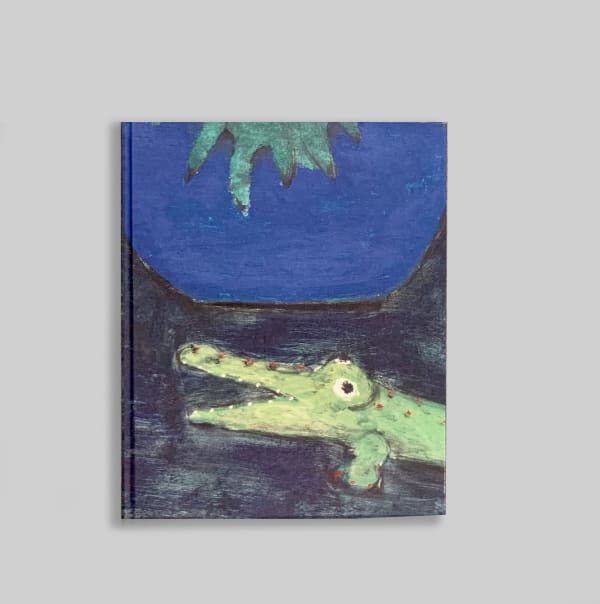
Milton Avery
A Sense of Place 2020Hardcover, 90 pagesRead more
Publisher: Waqas Wajahat New York -
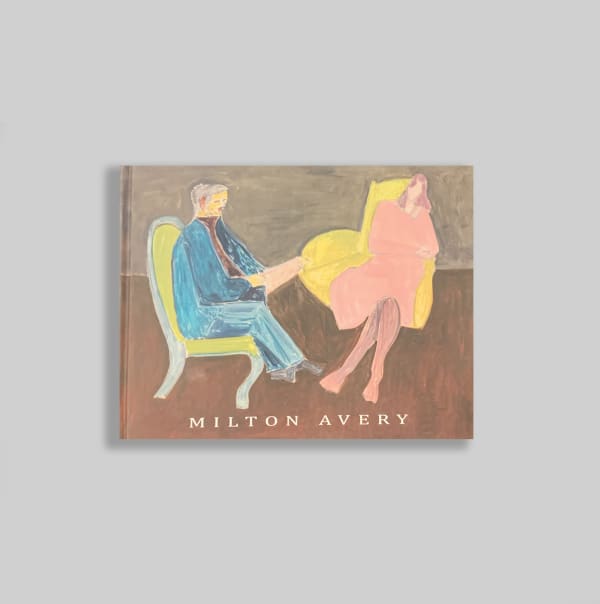
Milton Avery
The Shape of Color 2016HardcoverRead more
Publisher: Schwartz Wajahat -
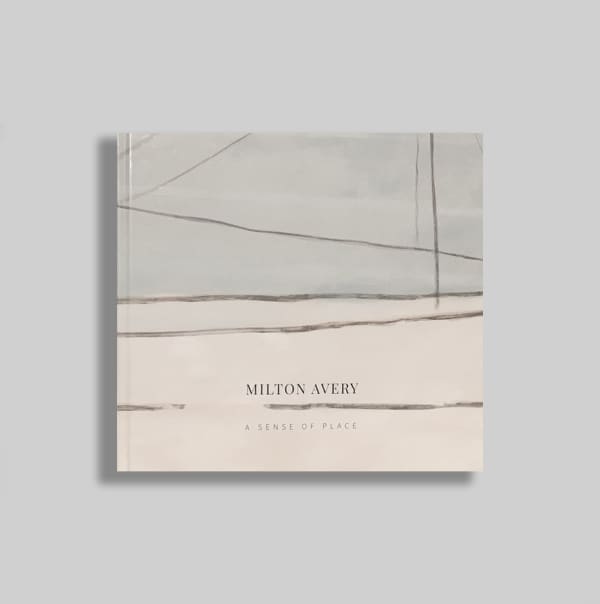
MILTON AVERY
A SENSE OF PLACE 2021 Read more -
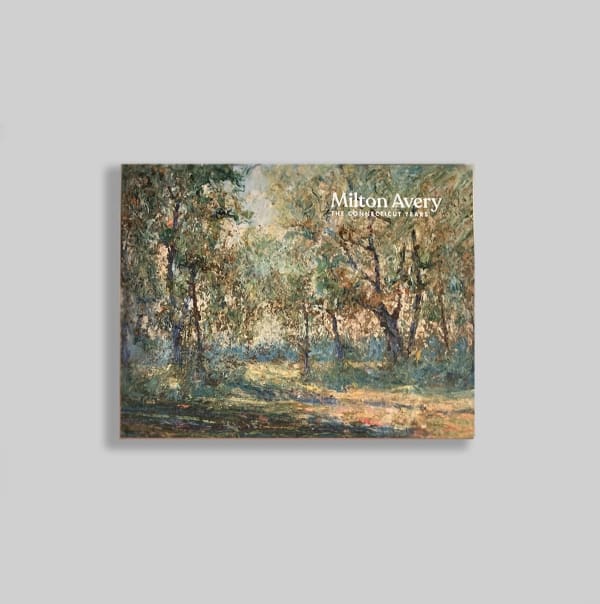
Milton Avery
THE CONNECTICUT YEARS 2021 Read more -
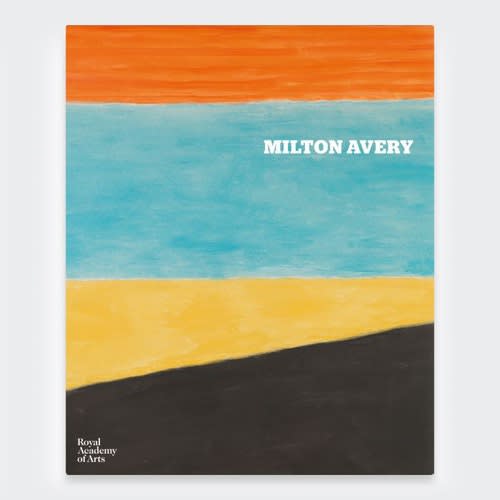
Milton Avery
Royal Academy of Arts 2021Hardcover, 150 pagesRead more
Publisher: Royal Academy of Arts
ISBN: 1912520435 -
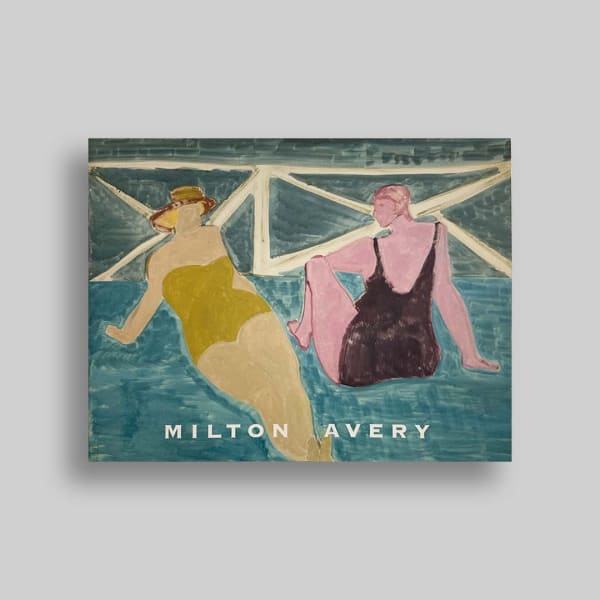
Milton Avery
Through Time 2010SoftcoverRead more
-

The Guardian reviews Milton Avery: American Colourist
★★★★★ July 17, 2022Milton Avery: American Colourist review – pure, exhilarating uplift ★★★★★ By Laura Cumming The self-effacing late starter and mentor to Rothko, with a singular gift...Read more -

The Financial Times reviews Milton Avery: American Colourist
July 15, 2022Space is airy and open, the cast list domestic and unheroic, a piercing sun or subdued lamplight in cosy interiors bathes everything in a warm...Read more -

The Guardian reviews Milton Avery: American Colourist at the Royal Academy of Arts
★★★★★ July 12, 2022'To see this art so closely related to abstract expressionism yet rooted in nature opens a new vista on American art itself. Avery is a...Read more -

Laura Freeman reviews Milton Avery: American Colourist for The Times
★★★★★ July 12, 2022'He was America’s first great modern colourist with a bracing, racing-silk palette.' “There have been others in our generation who have celebrated the world around...Read more -

The Telegraph reviews Milton Avery
★★★★ July 12, 2022Milton Avery: American Colourist, review: The 20th-century colossus you’ve probably never heard of By Cal Revely-Calder 12 July 2022 • 1:08pm An Impressionist at the...Read more -

The Art Newspaper features Milton Avery: American Colourist and talks to exhibition curator Edith Devaney
July 12, 2022“You always feel better after looking at a Milton Avery painting,” says Edith Devaney, the curator of the first comprehensive exhibition in Europe dedicated to...Read more -

‘Rothko’s guru: how Milton Avery transformed modern art’
The Telegraph previews Milton Avery: American Colourist at the Royal Academy of Arts July 6, 2022The story of how Milton Avery came to shape modern American art is really a love story. It begins in 1925, when, on a painting...Read more -

Milton Avery featured in The Observer’s best summer culture guide
Laura Cumming selects Milton Avery's upcoming exhibition at the Royal Academy of Arts for The Observer's best summer culture guide. May 30, 2022'Gentle, unassuming, with his outstanding gift for colour and his simplified grace, Milton Avery (1885-1965) is a singular master of American art.' – Laura CummingRead more -

The New Yorks Times reviews the work of Milton Avery
Roberta Smith takes a look at the work of Milton Avery, which is currently on view in Hartford and New York. May 12, 2022'He remained a singular hybrid, who never settled into any niche, but constantly circulated, combining different ratios of cartooning, folk art, European modernism and American...Read more -

The Washington Post reviews Milton Avery
March 16, 2022Milton Avery was the 20th century’s great ‘painter’s painter’ America’s most original colorist, the subject of new retrospective at the Wadsworth Atheneum, was inspired by...Read more -

The WSJ reviews Milton Avery
December 9, 2021‘Milton Avery’ Review: A Luminary Outside the Mainstream The painter’s first retrospective since 1982 reveals the genius in his formal economy and use of color....Read more -

Milton Avery At The Royal Academy of Arts
February 21, 2019The Royal Academy of Arts announces its 2022 programme, featuring the major exhibition Milton Avery: American Colourist The first comprehensive survey of Avery’s work in...Read more
